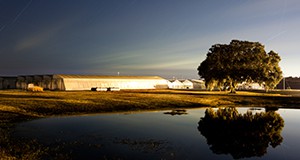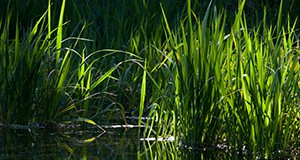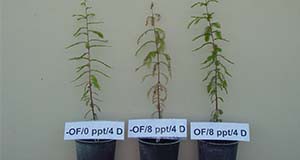Man-made activities can induce climate change and global sea-level rise, posing threats to the survival and growth of coastal vegetation in Florida. This three-page fact sheet explains how to ensure plant survival and facilitate the growth of coastal vegetation threatened by sea-level rise and the resulting oxygen deficiencies and saline stresses. Written by Guodong Liu, Yuncong Li, Kimberly Moore, Kim Gabel, Lei Wu, and Rafael Muñoz-Carpena, and published by the Horticultural Sciences Department.
http://edis.ifas.ufl.edu/hs1280
Tag: Lei Wu
What Else Can Surface Water Buffer Systems Do?: Exploring Multiple Ecosystem Services
 As society confronts the consequences of global warming, deteriorating water quality, and impoverished biodiversity, there is a growing urgency to develop and expand water buffers' multifunctional ecosystem services. However, limited information is available on other potential co-benefits associated with the use of buffers, particularly VFSs. This 5-page fact sheet provides information on buffers' multiple ecosystem benefits, such as niche products production, carbon sequestration, and flood risk mitigation, as well as recommendations on future research needs necessary to enhance multiple ecosystem services and benefits of buffers. Written by Lei Wu, Rafael Muñoz-Carpena, and Yuncong Li, and published by the UF Department of Soil and Water Science, November 2015.
As society confronts the consequences of global warming, deteriorating water quality, and impoverished biodiversity, there is a growing urgency to develop and expand water buffers' multifunctional ecosystem services. However, limited information is available on other potential co-benefits associated with the use of buffers, particularly VFSs. This 5-page fact sheet provides information on buffers' multiple ecosystem benefits, such as niche products production, carbon sequestration, and flood risk mitigation, as well as recommendations on future research needs necessary to enhance multiple ecosystem services and benefits of buffers. Written by Lei Wu, Rafael Muñoz-Carpena, and Yuncong Li, and published by the UF Department of Soil and Water Science, November 2015.
http://edis.ifas.ufl.edu/ss647
Vegetative Filter Strips: A Best Management Practice for Controlling Nonpoint Source Pollution
 Increasing numbers of pollutants have been observed in natural water systems. As awareness of agricultural sources of water pollution has grown, Best Management Practices (BMPs) have been specifically designed to address agricultural water pollutants and protect water quality. This 4-page fact sheet introduces one of the BMPs, Vegetative Filter Strips (VFSs), which efficiently control nonpoint pollution such as sediments, nutrients, and pesticides. The publication covers primary functions, key design factors, and maintenance of VFSs. Written by Lei Wu, Rafael Muñoz-Carpena, and Yuncong Li, and published by the UF Department of Soil and Water Science, October 2015.
Increasing numbers of pollutants have been observed in natural water systems. As awareness of agricultural sources of water pollution has grown, Best Management Practices (BMPs) have been specifically designed to address agricultural water pollutants and protect water quality. This 4-page fact sheet introduces one of the BMPs, Vegetative Filter Strips (VFSs), which efficiently control nonpoint pollution such as sediments, nutrients, and pesticides. The publication covers primary functions, key design factors, and maintenance of VFSs. Written by Lei Wu, Rafael Muñoz-Carpena, and Yuncong Li, and published by the UF Department of Soil and Water Science, October 2015.
http://edis.ifas.ufl.edu/ss646
